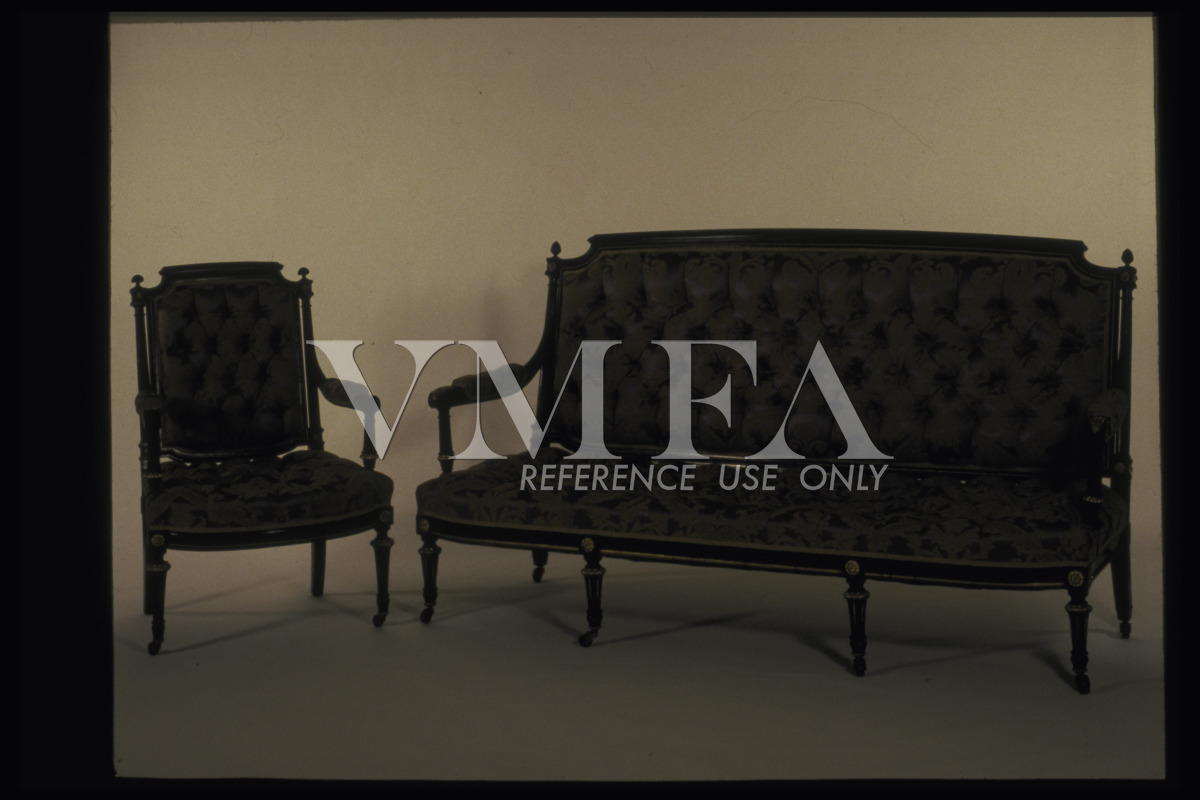
Side Chair (Primary Title)
Unknown (Artist)
in the style of, Gottlieb Vollmer, 1816 - 1883 (Artist)
This chair reflects the influence of French émigré cabinetmakers on American furniture produced in the post–Civil War era. By 1820, New York’s population exceeded that of Philadelphia and, with the completion of the Erie Canal in 1832, it became America’s leading commercial center. Eclipsing Philadelphia’s cabinetmaking trade, it also served as the source of “everything new in style.” By the 1850s, its high-end cabinetmaking firms were competing for space along Broadway’s elegant shopping district. The avenue’s commercial lineup included French-born Léon Marcotte, whose business incorporated a network of family members and associates supportive of his operations in New York and France. A bolder 19th-century update on French painted and gilded examples, the brass-mounted ebonized surface of this chair represents one of Marcotte’s most fashionable Louis XVI designs. The chair also displays the chapeau de gendarme crest rail (a central arch with reverse curves) found on other documented works by Marcotte. Yet these stylistic similarities are insufficient for attribution. The influence of Marcotte and other leading designers extended well beyond New York’s boundaries. A decade later, the German-born cabinetmaker Gottlieb Vollmer was producing similar works in Philadelphia.
Adolph D. and Wilkins C. Williams Fund
Image released via Creative Commons CC-BY-NC
Some object records are not complete and do not reflect VMFA's full and current knowledge. VMFA makes routine updates as records are reviewed and enhanced.

